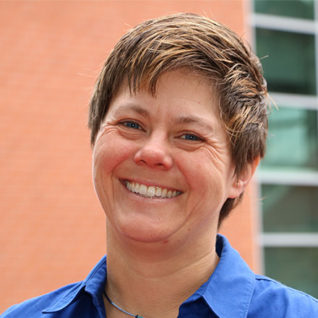We have a plan for that … or do we?
Continuous Improvement and our Strategic Plan
Continuous Improvement has arisen as a strong theme in CCC’s Strategic Plan discussions and I like it! Continuous Improvement ideas can be applied at the individual level all the way up to the organizational level. Think about the notes you make at the end of each semester telling yourself how you will teach this or that better next time (or even how you balance a bit longer in tree pose at each yoga class!) I know that the Pedagogy Conference organizers are using survey results from last year to make this year’s professional development event (Friday April 10) even more useful and inspiring than the inaugural one last year! Continuous Improvement also means we can have a genuine commitment to getting better, but without expecting perfection all at once. To me, this perspective makes excellence achievable without causing undue emotional strain!
What if our program review process became one that allows us to celebrate and learn from each others’ victories by making each other aware of the good work all across campus? This sharing of plans and resource needs could also direct support that helps accomplish activities that changes students’ lives. Wouldn’t it be nice to look forward to an opportunity to showcase your department’s work and solicit assistance, rather than dreading the program review task every 4 years (or 2 years for CTE)? What if SLO discussions were a delight, using common understanding within a safe environment to grow as teachers?
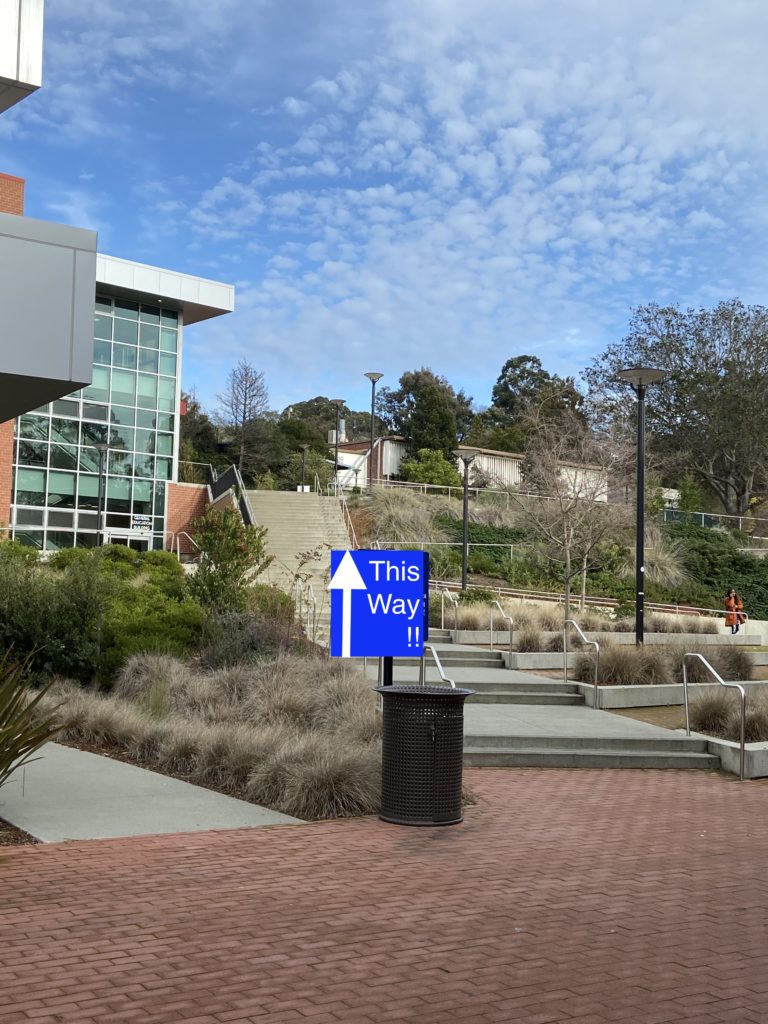
Strategic Plan as a Foundation we build together
The Strategic Plan of our college could be the foundation for this kind of work. Data, metrics, and measurable goals are unavoidable in our system, but I hope the plan we are developing this semester could also prompt thoughtful questions for our program reviews that spark creative and inspiring work that could go “beyond the numbers”. I also hope our Strategic Plan allows for a synthesis of the results into useful information our college can use to make informed and supportive decisions that are linked to a transparent budget process. Am I getting too close to perfection? A girl can dream, can’t she?
We were all involved on All Colege Day to move from the “environmental scan” phase to the outline and writing phases of creating our plan. It was a beautiful sight to see so many colleagues talking and thinking about what we do as a college! This week (Feb 13), College Council will hear and make recommendations about the overall structure of the plan. Throughout the next month, members of the Planning committee will be synthesizing the input from ACD not a draft of the plan. Look for them at upcoming participatory governance meetings! (Student Success – TBD, Budget 2/9, Operations 2/24, Associated Students Union 2/24, Academic Senate Council 3/2, Council of Chairs (3/4), Planning 3/6)
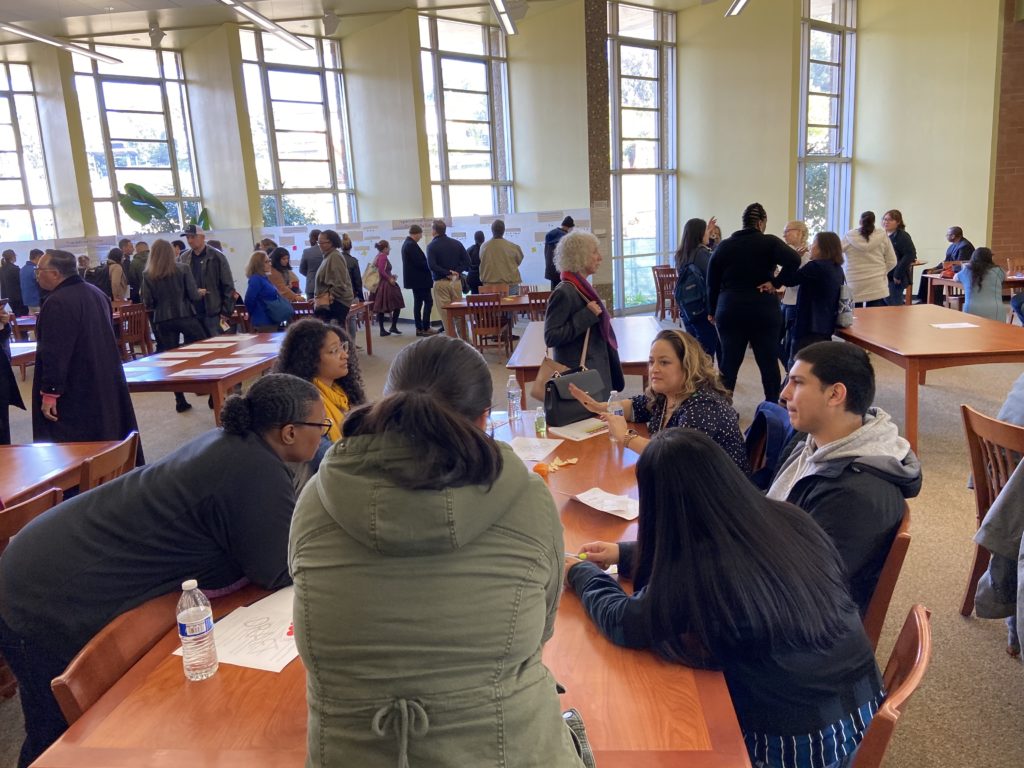
Hierarchy of Plans
CCC’s strategic plan must adhere to 4CD’s strategic plan. You can find it here at our district’s website. I found p20 (Mission/Vision/Values), 23 (the 2nd strategic direction is related to equity) , and 28-31 (all 5 strategies at a glance) the most useful examples of its content.
Our District’s plan must flow from California’s Chancellor’s Office “plan”, otherwise known as the Vision for Success. It has a similar structure to a strategic plan: 1) Mission/Vision/Values, 2) Goals, and 3) Measurable Outcomes, (so many outcomes are shown at the “college professionals” data tools at CCCCO or through the Vision Resource Center
Equity Data
Speaking of CCCCO data, here’s something to consider this week. These are graphs generated from the CTE outcomes survey data: Black student data from CCC is on the top, White student data in the middle, and Hispanic/Latinx student data on the bottom. This analysis requires additional scrutiny, but at first glance, I see that black student wage gains were less than white students’ in 2018 after taking courses at CCC (compare the blue lines of the graphs in the top and middle panel). Over the whole period (2013-2018), however, it looks like black student wages might be higher than white students after CCC coursework (compare bar graphs between panels). It also seems that white students saw larger wage gains from CCC job training than hispanic/latino students in 2018 (compare blue line graphs between the middle and lower panels) and that white students started off with higher salaries before coming to CCC than hispanic/latinx students (compare bar graphs between the middle and lower panel).
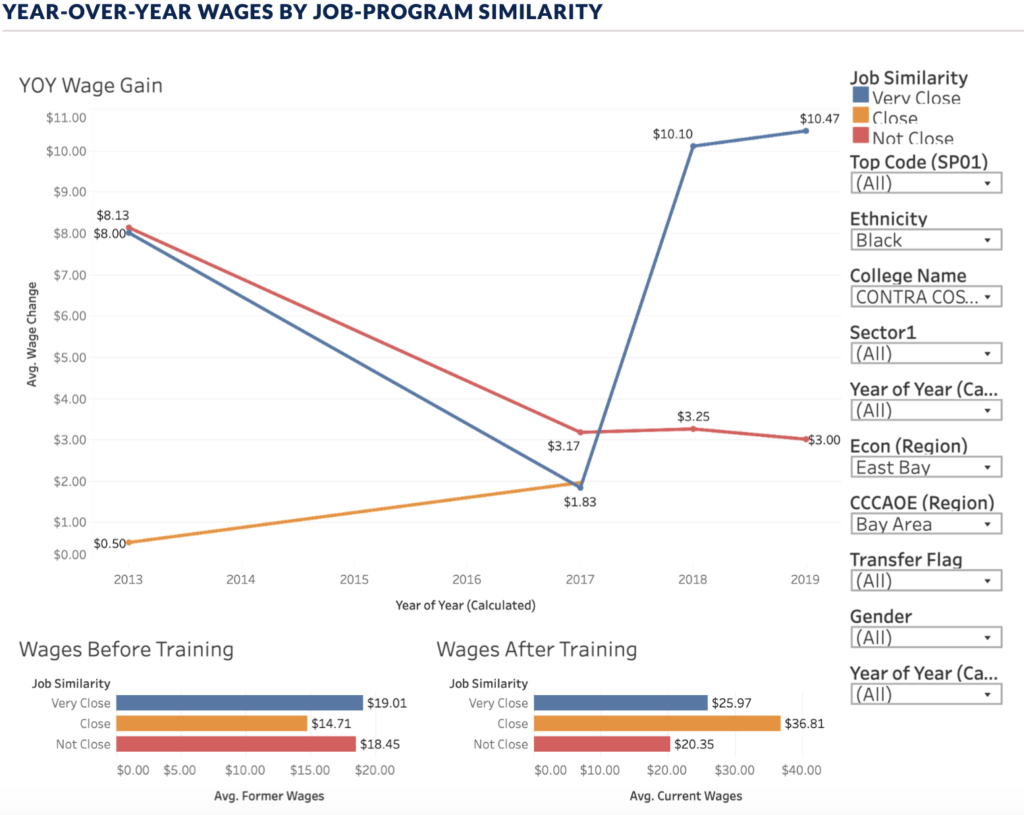
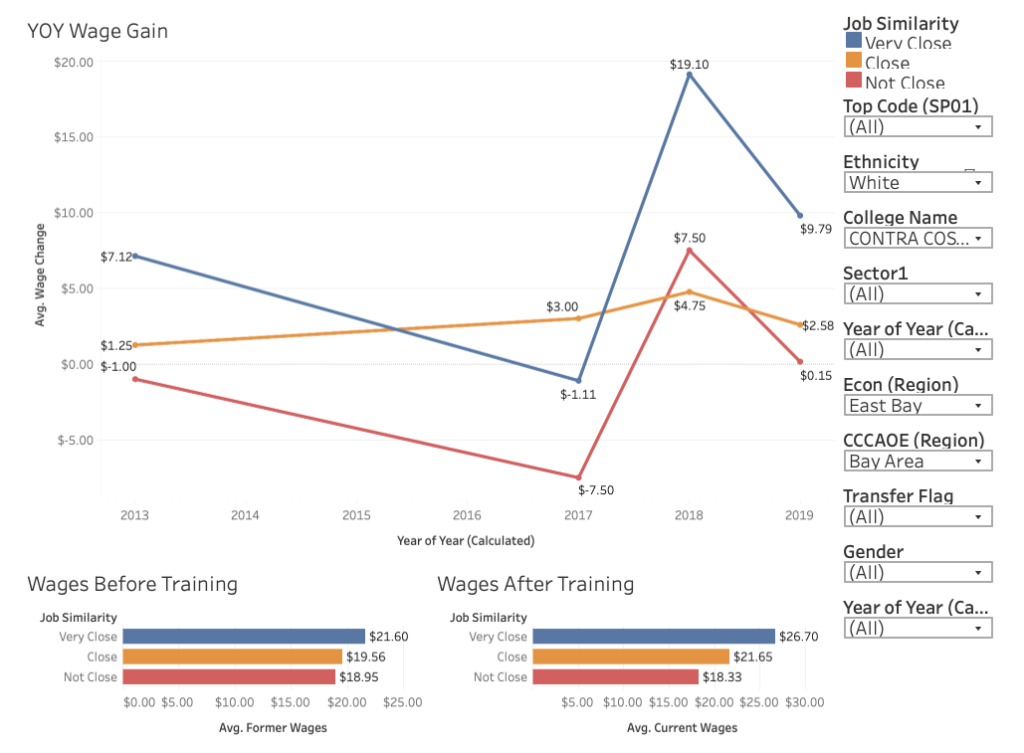
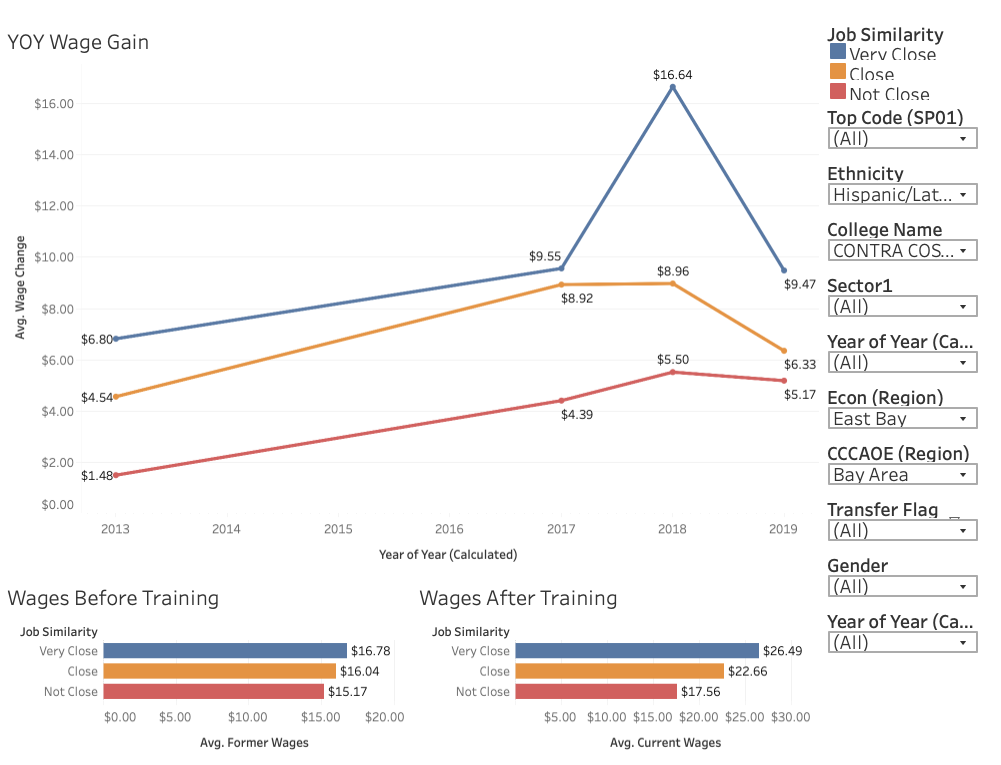
To visualize your own versions of this data start here: https://www.cccco.edu/ choose “College Professionals”, then “data”, scroll down to “CTE Outcomes Survey”, Scroll down to 2019 visualizations, choose “year-over-year wages by job-program similarity”. TOP code (all), Ethnicity (first Black, then a 2nd graph with White, then a 3rd with Hispanic/Latinx), College (contra costa), sector (all), year of year (all), Econ region (east bay). Cccaoe region (Bay Area), transfer (all), Gender (all), year of year (all).
The best laid plans….
One thing I do NOT think Continuous Improvement should be is obsessive focus on goals set from an uninformed or idealized perspective. This tendency can easily become common practice in the way our community college system is set up in CA. Continuous Improvement works best when the practitioners themselves (like us faculty!) develop meaningful goals, and then refine them with the help of appropriate experts outside of our areas. I hope we can embrace this process and have broad participation now, and continue to be engaged with continuous improvement over the next five years.
After all, we chose to be faculty! We love inquiring, testing ideas, revision and sharing results. Isn’t that the entire academic endeavor?!

